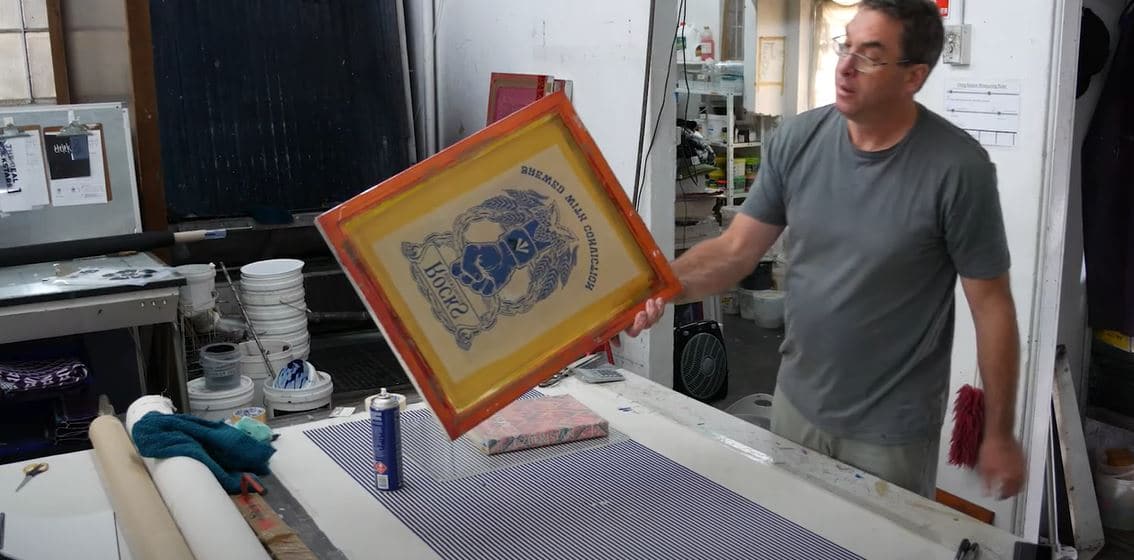The Necessary Overview to Understanding Screen Printing and Its Versatile Uses
Screen printing has a rich background that dates back to ancient times, developing right into an advanced strategy utilized throughout various markets today. This overview discovers the complexities of the screen printing procedure, detailing its applications in advertising, home, and fashion style - 10:9 Design near me. Recognizing these basics can open up creative capacity for both creative and industrial projects. The adhering to areas will expose essential ideas and techniques to enhance one's screen printing undertakings
The Background of Screen Printing
Screen printing has roots that map back centuries, its development reflects the technological and creative advancements of various societies. Stemming in old China, the strategy was initially utilized for decorating fabrics and later infect Japan, where it came to be important to Ukiyo-e woodblock printing. The method shifted to Europe in the 18th century, where it acquired popularity among artisans and commercial printers. The innovation of photo solution in the 20th century revolutionized screen printing, enabling more intricate designs and better performance. Musicians like Andy Warhol better thrust its popularity, making use of the tool to create iconic works that blended commercialism and art. By the late 20th century, screen printing had established itself as a versatile technique, employed in style, marketing, and art. Today, it remains to advance, integrating electronic modern technology and broadening its applications across different markets.
The Screen Printing Process Explained
Screen printing transforms artistic visions into tangible layouts via a series of specific steps. Initially, a picture is developed and afterwards transferred onto a screen, usually made of great mesh textile stretched over a frame. A light-sensitive emulsion is applied to the screen, which is revealed to light, setting in locations not covered by the image. After washing out the unhardened solution, a stencil is created.
Next, the screen is placed over the substratum, whether it be fabric, paper, or an additional material. Ink is then pressed through the open areas of the stencil using a squeegee, depositing the design onto the substrate below. This procedure can be duplicated for numerous colors, calling for separate displays for each and every tone. The published item is healed making use of heat to guarantee the ink adheres effectively, resulting in a durable, vibrant style all set for usage.
Sorts Of Screen Printing Techniques

Additionally, specialty strategies, such as discharge screen printing, eliminate dye from the fabric to produce softer prints, while aluminum foil screen printing uses metallic foil to attain a glossy finish (10:9 Design Screen Printing Texas). Each technique offers distinct qualities, satisfying different you can look here innovative needs and manufacturing ranges, eventually expanding the opportunities within the screen printing domain name
Applications of Screen Printing in Various Industries

In addition, the signs and marketing fields make use of screen printing for developing captivating displays and banners. This technique permits strong colors and detailed layouts that capture interest. In electronics, screen printing is used for applying conductive inks to circuit card, necessary for part links. Additionally, the home décor industry welcomes screen printing to create distinct designs on fabrics and wall surface art. On the whole, screen printing functions as an important tool across varied fields, boosting products with personalized and visually appealing graphics.
Tips for Effective Screen Printing Projects
While undertaking a screen printing task, cautious focus to detail can substantially improve the final result. Choosing top notch products is essential; this includes the screen, inks, and substratums. Making use of appropriate mesh matters can influence ink deposition and information resolution. Prep work is equally vital; comprehensive cleansing of screens and proper exposure times ensure crisp prints.
Next, exact registration is essential for multi-color prints. Using placement devices can aid achieve accurate layering. In addition, testing prints on scrap materials prior to production assists identify possible concerns without wasting sources.
Often Asked Concerns
What Materials Are Finest for Screen Printing on Fabric?
Cotton and polyester blends are excellent for screen printing on material because of their longevity and ink absorption. Additionally, specialized textiles like silk or canvas can produce unique appearances and finishes, boosting the general style quality.
How Do I Clean and Maintain Screen Printing Devices?
To clean and preserve screen printing tools, one ought to frequently clean screens with proper solvents, inspect mops for wear, lube moving parts, and store all products in a completely dry, dust-free atmosphere to extend their life-span.
What Are the Ecological Impacts of Screen Printing?
Screen printing can have significant environmental influences, consisting of chemical waste from inks and solvents, water use during cleansing processes, and power intake. Lasting techniques and environmentally friendly products are crucial for minimizing these adverse impacts.
Can Screen Printing Be Done in your home Effectively?
Screen printing can be properly done at home with the appropriate materials and techniques. Enthusiasts can create high quality prints, though success relies on their skill degree, tools, and understanding of the procedure involved.
What Are the Costs Related To Beginning a Screen Printing Business?

Beginning a screen printing service entails expenses for equipment, materials, and office. First expenses usually range from a couple of hundred to numerous thousand dollars, depending upon the range, high quality of equipment, and wanted manufacturing capability.
Screen printing has a rich history that dates back to ancient times, progressing right into an innovative strategy made use of throughout numerous sectors today. Another technique, rotary screen printing, employs cylindrical screens, facilitating continuous printing on fabric rolls, thus enhancing effectiveness for large-scale productions. Additionally, specialty techniques, such as discharge screen printing, remove color from the textile to produce softer prints, while foil screen printing applies metallic foil to achieve a glossy coating. In the style industry, screen printing is widely used to develop vivid layouts on clothing, allowing brands to showcase their one-of-a-kind designs. Cotton and polyester blends are More Info suitable for screen printing on material due to their toughness and ink absorption.